Malaysia Flight 370: Searchers race to try to trace sounds detected in ocean
updated 10:06 AM EDT, Sun April 6, 2014
Your video will begin momentarily.
STORY HIGHLIGHTS
- NEW: Chinese method of picking up pulse lacks sophistication, expert says
- The plane flew around Indonesian airspace, a Malaysian source says
- A Chinese search ship picked up signals in the Indian Ocean, authorities say
- An Australian naval vessel is pursuing another noise in a different area
Kuala Lumpur, Malaysia (CNN) -- Search teams are racing to figure out if a number of underwater sounds detected in the southern Indian Ocean came from a flight recorder from Malaysia Airlines Flight 370.
Time is against them, as the batteries powering the missing plane's devices that send out pings are expected to expire in the coming days.
The desperate efforts to trace the signals came as new details emerged about the missing plane's likely path on the night it vanished.
A senior Malaysian government source told CNN that Flight 370 flew around Indonesian airspace after it dropped off Malaysian military radar. The plane may have been intentionally taken along a route designed to avoid radar detection, the source said.
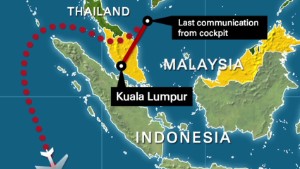

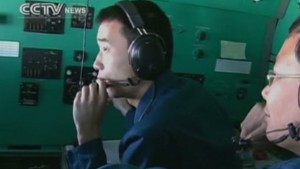
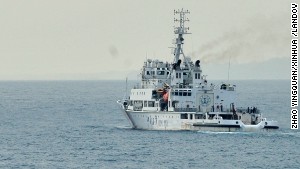
In the search for the plane in the Indian Ocean, the Chinese patrol ship Haixun 01 picked up two signals, one on Friday and another on Saturday, that were only 2 kilometers (1.25 miles) apart, authorities said.
"This is an important and encouraging lead, but one that I urge you to continue to treat carefully," Angus Houston, the head of the Australian agency coordinating search operations, said Sunday.
The electronic pulses were consistent with those emitted by pingers on an aircraft's flight data and voice recorders, he said, but haven't been verified as coming from Flight 370.
Sounds travel long distances underwater, he said, making it difficult to ascertain their sources. If detectors were near a pinger, they would pick up the signal for a more sustained period.
Houston also said that search authorities were informed Sunday that the Ocean Shield, an Australian naval vessel equipped with sophisticated listening equipment, has detected "an acoustic noise" in another area of the ocean.
The signals are the latest leads in a huge, multinational hunt for Flight 370, which disappeared almost a month ago over Southeast Asia with 239 people on board. Investigators have so far been unable to say why the plane flew far off course or where it ended up.
'Most promising lead'
HMS Echo, a British navy ship equipped with advanced detection gear, is on its way to the area where the Chinese ship picked up the signals, Houston said. It is likely to arrive in the early hours of Monday morning. Australian planes are also headed to the area.
The Ocean Shield, which has a high-tech pinger locator borrowed from the U.S. Navy, will continue to pursue the sound it heard. If that lead turns cold, it will move to the other detection area, a journey that will take at least a day, officials said.
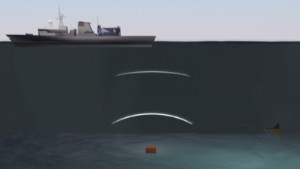


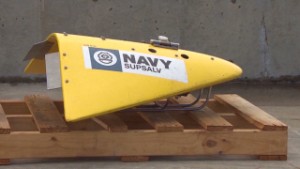
"At the moment, the most promising lead appears to be the one associated with Haixun 01," Houston said at a news conference in Perth, the Western Australian city serving as a hub for search operations.
The pulses registered by the Chinese ship are of particular interest because they occurred in an area that fits with the latest calculation by experts of roughly where the plane is likely to have entered the water, Houston said.
The area of detection is roughly 1,600 kilometers (1,000 miles) west-northwest of Perth, according to coordinates reported by Chinese state media. The water in the area is about 4,500 meters (2.8 miles) deep, authorities said.
Caution urged
Several analysts on CNN said the information from search officials gave cause for optimism.
"We've got to be a little careful about groupthink here, but right now the evidence seems to point towards the Chinese vessel's location," said Alan Diehl, a former accident investigator for the U.S. Air Force.
What's more, a number of white objects were spotted floating on the surface of the water about 90 kilometers (55 miles) from where the sounds were detected, authorities said.
But Houston warned that the latest discoveries could turn out to have no connection to the missing plane.
"In the days, weeks and possibly months ahead, there may be leads such as the one I'm reporting to you this morning on a regular basis," Houston said.
"I assure that we will follow up and exhaust every credible lead that we receive," he said.
The Chinese vessel detected the second signal for a total of 90 seconds on Saturday, according to authorities.
"It's not a continuous transmission," Houston said. "If you get close to the device, we should be receiving it for a longer period of time."
A former longtime Navy oceanographer said the Chinese equipment shown on TV didn't appear to be very sophisticated. Van Gurley told CNN that the gear was designed to be held by human divers and only had short-range capabilities.
"The fact that they're deploying it right over the side near the ocean surface, they're getting hits a mile apart, kind of doesn't add up -- but it does require investigation," said Gurley, now a senior manager at a consulting firm that uses complex mathematical methods to solve problems like finding a missing plane.
Australian authorities are still working on understanding the technology used regarding the data generated by the Haixun 01 as it searches for the missing plane, a source with the Australian Defense Force told CNN.
Plane said to have flown around Indonesia
Authorities say Flight 370 ended up flying south over the Indian Ocean after it dropped off military radar off the west coast of peninsular Malaysia on March 8. The conclusion is based on an expert analysis of satellite, radar and other available data.
More detail has been added to the flight path calculated by investigators, a senior Malaysian government source told CNN on Sunday.
After reviewing radar track data from neighboring countries, officials have concluded that the passenger jet curved north of Indonesia before turning south toward the southern Indian Ocean. Its path took it around Indonesian airspace.
Malaysian government officials have said previously that the plane appeared to have been deliberately diverted from its original course, which would have taken it north to Beijing.
"What's also interesting about this route ... is it appears it goes to the designated waypoints that we (pilots) use (and air traffic control uses to give directions)," said CNN aviation analyst Miles O'Brien. "This particular route that is laid out happens to coincide with some of these named intersections. So what it shows is an experienced pilot somewhere in the mix on this."
O'Brien said that an experienced pilot who had flown in the region would know where radar coverage begins and ends and where radio communication handoffs occur.
He said he was not pointing to any particular individual, as there are several possible scenarios on what may have happened in the cockpit, including a hijacking by someone who knew how to fly a commercial jet.
Investigators haven't yet said who they think might have flown the plane off course or why. They also haven't ruled out mechanical problems as a possible cause of the plane's diversion.
Time running out
So far, no physical evidence of the plane's eventual whereabouts has been found, leaving many relatives of those on board trapped in uncertainty.
Weeks of searching -- initially in the seas around Malaysia and Vietnam, where the plane lost contact with air traffic control, and then in the remote southern Indian Ocean -- have turned up no traces.
A series of objects spotted in the ocean by satellites and flight crews have turned out to be bits of fishing gear or other things unrelated to Flight 370.
At the end of last week, the search expanded under the waves, as well. The batteries for the missing plane's pingers are expected to last around 30 days -- a deadline that falls on Monday.
"We're running out of time in terms of the battery life," Houston said, noting that sometimes the batteries last for an additional eight to 10 days.
CNN's Jethro Mullen reported and wrote from Hong Kong, and journalist Ivy Sam reported from Kuala Lumpur. Ralph Ellis and Ben Brumfield contributed to this report.
No comments:
Post a Comment
Thanks for commenting. Your comments are needed for helping to improve the discussion.